Off-Grid Renewable Energy Solutions: Science & Innovation Insights
Category: Renewable Energy
Unlocking Off-Grid Renewable Energy Solutions for All
Navigating the world of off-grid renewable energy can be overwhelming, whether you’re a curious beginner or a seasoned electrical engineer. This blog illuminates the science and innovation behind off-grid solutions using wind, solar, and emerging technologies. Perhaps you landed here searching for reliable ways to power remote locations or cutting-edge methods to design self-sufficient energy systems. Your challenge might be understanding how to balance multiple renewable sources efficiently or grasp the technical nuances of novel battery storage. Unlike typical overviews that skim the surface, this post dives deep into component selection, system design, integration strategies, and optimization, tailored to your expertise level. We’ll break down complex concepts clearly and connect them to practical applications, enabling you to make informed decisions or expand your engineering toolkit. This isn’t just theory — it’s actionable knowledge connecting innovation to real-world off-grid energy scenarios. Continue reading to explore a structured, insightful journey on how modern renewable technologies converge to unlock true energy independence.
- Unlocking Off-Grid Renewable Energy Solutions for All
- Understanding Off-Grid Renewable Energy Systems: Definitions, Use Cases, and Benefits
- Core Renewable Energy Technologies for Off-Grid Use: Solar Photovoltaics, Wind Turbines, and Emerging Options
- Energy Storage Solutions: Batteries, Hybrid Systems, and Innovative Storage Technologies
- System Design and Integration: Balancing Generation, Storage, and Load Management
- Power Electronics and Control Systems: Inverters, Charge Controllers, and Smart Controls – Their Role in System Stability and Adaptability
- Site Assessment and Environmental Factors: Wind Resource, Solar Irradiance, and Location Challenges
- Off-Grid System Sizing and Load Analysis: Calculating Needs and Designing Scalable Systems
- Innovations and Trends in Off-Grid Renewable Technologies: Hybrid Systems, AI, and Microgrids
- Challenges and Solutions in Off-Grid Deployments: Technical, Economic, and Maintenance Aspects
- Case Studies and Practical Examples: Successful Off-Grid Renewable Projects and Lessons Learned
Understanding Off-Grid Renewable Energy Systems: Definitions, Use Cases, and Benefits
At its core, an off-grid renewable energy system operates independently from centralized utility grids by generating, storing, and managing power through localized, sustainable sources such as solar panels, wind turbines, and battery storage units. Unlike traditional grid-tied systems, off-grid setups are designed for energy self-sufficiency, providing reliable electricity in areas where grid access is limited, unreliable, or nonexistent.
Key Characteristics of Off-Grid Systems:
- Autonomy: Complete independence from utility grids ensures consistent power supply tailored to specific site needs.
- Hybrid Integration: Combining multiple renewable sources like solar and wind maximizes energy availability and system resilience.
- Energy Storage: Battery banks or other storage technologies are essential to store excess power and ensure supply during periods without sunlight or wind.
Common Use Cases for Off-Grid Solutions Include:
- Remote residential homes and cabins far from utility infrastructure.
- Agricultural operations such as irrigation or livestock monitoring.
- Telecommunications and emergency response stations requiring uninterrupted power.
- Rural electrification projects aimed at increasing access in developing regions.
- Recreational vehicles, boats, and mobile units demanding portable, dependable energy.
Why Off-Grid Renewable Energy Systems Matter:
- Energy Independence: Reduces reliance on fossil fuels and fluctuating energy markets.
- Environmental Sustainability: Minimizes carbon footprint by harnessing clean, renewable resources.
- Cost Savings Over Time: Avoids expensive grid connection fees and mitigates rising utility costs.
- Enhanced Reliability: Critical in disaster-prone or isolated areas where grid outages are common.
Understanding these fundamental principles sets the stage for deeper exploration into system design, component optimization, and breakthrough innovations that empower users to build efficient, sustainable off-grid energy solutions. Whether developing standalone setups or hybridized microgrids, mastering off-grid technologies is crucial for driving the future of renewable energy deployment worldwide.
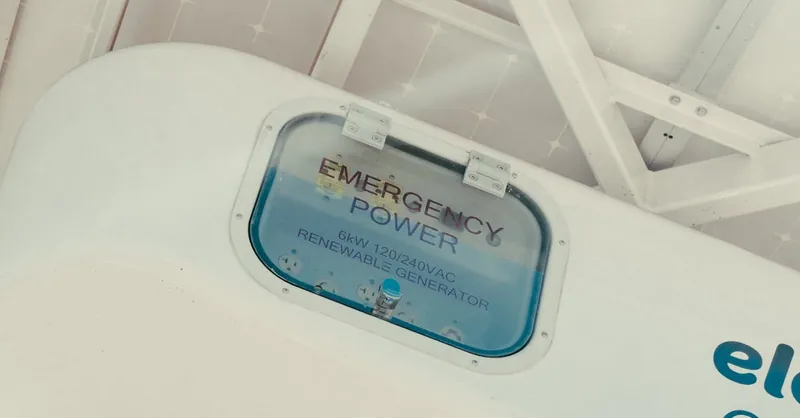
Image courtesy of Kindel Media
Core Renewable Energy Technologies for Off-Grid Use: Solar Photovoltaics, Wind Turbines, and Emerging Options
When it comes to powering off-grid systems, selecting the right renewable energy technology hinges on understanding the science behind each option and their suitability for the specific application environment. Among the most widely deployed are solar photovoltaics (PV) and wind turbines, while rapidly advancing emerging technologies offer promising alternatives that address niche challenges and optimize energy resilience.
Solar Photovoltaics (PV)
Solar PV remains the backbone of many off-grid installations due to its scalability, falling costs, and relative ease of deployment. Fundamentally, solar panels operate based on the photovoltaic effect, where semiconductor materials such as silicon absorb sunlight photons, generating an electric current. Key advantages include:
- Modular design enabling tailored capacity—from small residential setups to larger microgrids.
- High reliability with minimal maintenance because of no moving parts.
- Effective performance in diverse climates, although output depends heavily on solar irradiance and weather conditions.
Solar PV systems are especially well-suited for locations with ample daylight exposure and can be paired with battery storage to smooth diurnal variability. Advances in bifacial panels and perovskite materials promise even higher efficiencies and lighter form factors.
Wind Turbines
Wind turbines convert kinetic energy from air flow into electrical power via aerodynamic lift and rotation mechanics. The core components include rotor blades, a gearbox, and a generator. Off-grid wind applications benefit from:
- Complementary generation profiles to solar—wind energy often peaks during nighttime or overcast periods.
- The ability to tap into consistent wind regimes in open, elevated or coastal sites.
- Varied turbine types available from small horizontal-axis models (1-10 kW) designed for remote homes to larger units for community systems.
Challenges for off-grid wind include site-specific wind resource assessment, mechanical wear over time, and noise considerations. Nonetheless, their integration into hybrid systems improves overall system stability and reduces dependence on battery storage alone.
Emerging Technologies
Cutting-edge renewable energy solutions are expanding beyond traditional solar and wind, driven by advances in materials science and novel energy harvesting methods. Noteworthy emerging technologies include:
- Micro-hydro power: Utilizes the kinetic energy of flowing water in streams or small rivers, ideal for rural communities near water bodies.
- Thermoelectric generators: Convert temperature differentials directly to electricity, offering niche applications for waste heat recovery or remote sensing.
- Advanced energy harvesting: Piezoelectric materials and kinetic energy converters open new frontiers in low-power off-grid sensors and IoT devices.
- Aerogenerators and airborne wind energy: Experimental airborne systems harness stronger high-altitude winds with tethered drones or kites, potentially revolutionizing wind resource capture.
Selecting the optimal technology or combination thereof involves analyzing local resource availability, load profiles, and long-term sustainability goals. Integrating multiple complementary technologies often yields the most resilient and efficient off-grid renewable energy solutions.

Image courtesy of Pixabay
Energy Storage Solutions: Batteries, Hybrid Systems, and Innovative Storage Technologies
Effective energy storage is the linchpin of reliable off-grid renewable energy systems. Because renewable sources like solar and wind are inherently intermittent, storing excess energy generated during peak production periods is essential to meeting demand when those resources are unavailable. Without appropriate storage solutions, off-grid systems risk power shortages and compromised stability, undermining the goal of energy independence.
Batteries: The Foundation of Off-Grid Storage
Batteries remain the most widely adopted storage technology in off-grid setups, delivering high energy density, modular scalability, and relatively mature technology. The dominant battery types include:
- Lead-Acid Batteries: Cost-effective and proven but limited by shorter lifespans and lower depth of discharge (DoD).
- Lithium-Ion Batteries: Increasingly preferred for off-grid systems due to higher energy efficiency, longer cycle life, and lighter weight despite higher upfront costs.
- Flow Batteries: Emerging for larger off-grid and microgrid applications, offering long duration storage with enhanced scalability and rapid response times.
Key performance metrics for battery selection include cycle life, depth of discharge, charge and discharge efficiency, maintenance requirements, and temperature tolerance. Proper battery management systems (BMS) are critical to optimize lifespan and ensure safe operation.
Hybrid Energy Storage Systems
To enhance reliability and maximize renewable generation utilization, many off-grid systems employ hybrid storage configurations combining different battery chemistries or integrating other storage forms such as supercapacitors. Hybrid systems can:
- Smooth power delivery by balancing quick charge/discharge capabilities with long-term energy capacity.
- Mitigate degradation effects by distributing load across complementary storage technologies.
- Enable grid-forming capabilities necessary for seamless integration of multiple energy sources and loads.
Hybrid energy storage designs also align well with hybrid renewable energy systems, balancing the variable profiles of solar, wind, and other generators for optimized performance.
Innovative and Emerging Storage Technologies
Beyond traditional batteries, innovative energy storage technologies are transforming off-grid energy management:
- Thermal energy storage: Captures excess renewable electricity as heat (or cold) to be converted back to electricity or used directly, useful in integrated power and heating applications.
- Hydrogen storage: Surplus power is converted into hydrogen via electrolysis, then stored and reconverted in fuel cells for long-duration discharge — ideal for large-scale, seasonal energy management.
- Compressed air energy storage (CAES): Uses surplus electricity to compress air in underground reservoirs, releasing it later to drive turbines and generate electricity.
- Advanced ultracapacitors: Provide rapid bursts of power for smoothing transient loads or enhancing power quality.
These cutting-edge technologies are paving the way for more resilient, scalable, and cost-effective off-grid energy solutions by addressing storage constraints unique to remote and variable renewable energy environments.
Impact of Storage on System Reliability and Design
The design and capacity of energy storage fundamentally shape both the reliability and cost-effectiveness of off-grid renewable systems. Large, well-managed storage buffers reduce dependency on fossil fuel backups and increase autonomy during prolonged low-generation periods, but they require upfront investment and careful system sizing. Conversely, under-sizing storage can lead to frequent power outages or curtailed renewable production.
From a system design perspective, storage influences:
- The choice and sizing of renewable generators.
- Load management and demand response strategies.
- Maintenance schedules and overall system lifespan.
In essence, mastering energy storage integration is critical to unlocking the full potential of off-grid renewable energy systems, enabling sustainable, uninterrupted power in the most challenging environments.
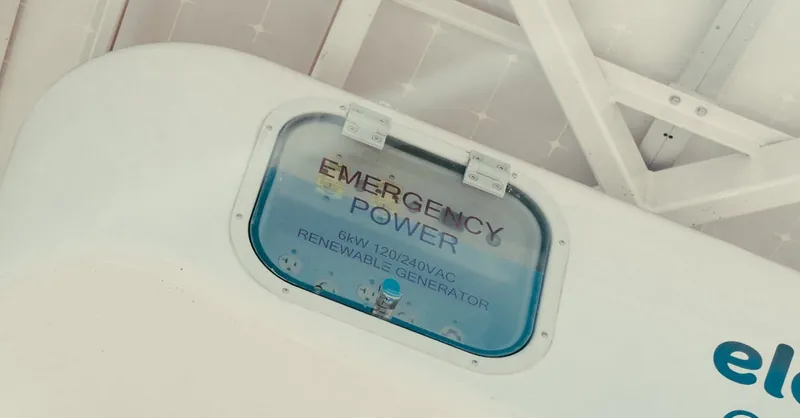
Image courtesy of Kindel Media
System Design and Integration: Balancing Generation, Storage, and Load Management
Designing an efficient off-grid renewable energy system hinges on harmonizing three critical components: power generation, energy storage, and load management. Each element influences the system's overall performance, reliability, and cost-effectiveness. Engineers and beginners alike must apply fundamental electrical engineering principles to optimize this balance, ensuring the system consistently meets energy demands while minimizing waste and degradation.
Optimizing Generation Capacity
Accurate assessment of site-specific renewable resources—solar irradiance, wind speed, or water flow—is the foundational first step. Oversizing generators wastes capital and can lead to excessive curtailment, whereas undersizing risks energy shortfalls and reliance on backup sources. Engineers use tools like capacity factor analysis, load profiling, and simulation software to size solar arrays, wind turbines, and emerging generators appropriately relative to expected daily and seasonal variations.
Designing Storage for Reliability and Longevity
Storage systems must be sized and managed to accommodate both short-term fluctuations and longer-term energy deficits. Key engineering considerations include:
- Depth of Discharge (DoD) and cycle life to prevent premature battery degradation.
- Effective battery management systems (BMS) to control charge and discharge rates.
- Integration of hybrid storage technologies to balance power and energy demands.
Proper integration maximizes usable storage capacity, reduces lifecycle costs, and supports a stable power output during periods of low resource availability.
Advanced Load Management Strategies
Intelligent load management is indispensable for off-grid systems to maintain equilibrium between supply and demand. Techniques include:
- Prioritization of critical loads over discretionary consumption.
- Implementation of demand response to shift or shed loads dynamically.
- Use of smart controllers and inverter-based systems to modulate energy flows in real-time.
This approach prevents overloads, reduces unnecessary energy consumption, and extends system lifespan by avoiding deep cycling of batteries.
System Integration Best Practices
Successful off-grid systems integrate generation, storage, and load components through seamless control strategies and scalable architectures. Core engineering principles for integration encompass:
- Power electronics for efficient DC–AC conversion and grid-forming capabilities.
- Modular system design facilitating easy expansion and maintenance.
- Robust safety mechanisms, including overcurrent protection, grounding, and fault detection.
Together, these strategies ensure that the off-grid renewable energy system delivers optimal performance, high efficiency, and long-term resilience, fulfilling the promise of reliable, sustainable energy independence in some of the most challenging environments worldwide.
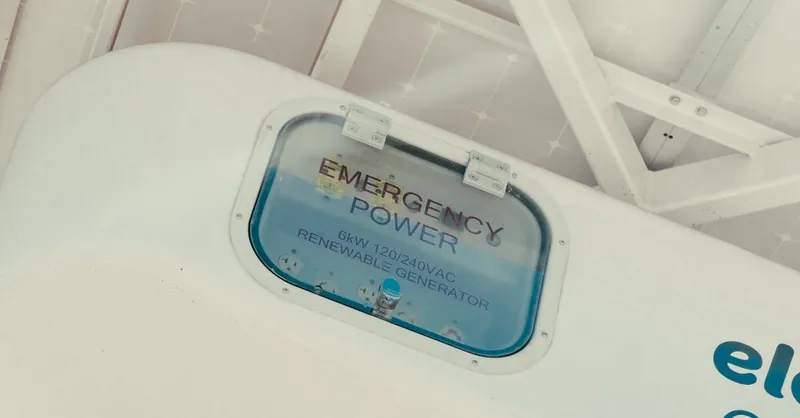
Image courtesy of Kindel Media
Power Electronics and Control Systems: Inverters, Charge Controllers, and Smart Controls – Their Role in System Stability and Adaptability
At the heart of every off-grid renewable energy system lies a sophisticated network of power electronics and control systems that convert, regulate, and optimize electrical energy flow to ensure stability, efficiency, and adaptability. Key components such as inverters, charge controllers, and smart control units act as the system’s nervous system—coordinating the interaction between renewable generation sources, energy storage, and electrical loads to maintain seamless operation under varying conditions.
Inverters: Bridging DC Generation to AC Consumption
Most renewable generators and battery storage produce direct current (DC) electricity, but the majority of residential and commercial loads require alternating current (AC). Inverters perform this essential conversion with high efficiency, while often providing additional functionalities such as:
- Grid-forming capabilities, allowing the inverter to establish stable voltage and frequency for the off-grid microgrid.
- Maximum power point tracking (MPPT) to dynamically optimize power extraction from solar panels or wind turbines.
- Advanced waveform conditioning to ensure clean, stable power output compatible with sensitive electronics.
- Support for bidirectional energy flow, enabling battery charging and discharging seamlessly.
Modern inverters integrate intelligent algorithms that compensate for load fluctuations and variable generation, enhancing system robustness and preventing disruptions.
Charge Controllers: Safeguarding Battery Health and Efficiency
Charge controllers serve as critical intermediaries between renewable generators and battery banks, regulating charging processes to prevent overcharging, deep discharging, and expensive battery degradation. Effective charge controllers incorporate:
- MPPT technology, which improves charging efficiency by constantly adjusting the input voltage to maximize power transfer.
- Multiple charging stages—bulk, absorption, and float—to optimize battery lifespan.
- Protection mechanisms against reverse current flow, voltage spikes, and thermal overload.
Selecting the right charge controller tailored to battery chemistry and system scale is vital for maximizing battery performance and longevity in off-grid applications.
Smart Controls: Enabling Adaptive, Resilient Energy Management
Increasingly, off-grid systems deploy smart controllers and energy management systems (EMS) that leverage real-time data, predictive algorithms, and user-defined priorities to dynamically balance generation, storage, and consumption. These intelligent control platforms offer:
- Load prioritization and shedding, ensuring critical loads receive uninterrupted power during shortages.
- Integration with weather forecasts and resource sensing to proactively adjust generation or storage usage.
- Remote monitoring and diagnostics, enabling operators to optimize performance and identify faults promptly.
- Automated coordination among multiple renewable sources and hybrid storage technologies for enhanced system synergy.
By incorporating smart controls, off-grid renewable energy systems transcend basic operation—evolving into adaptive, resilient networks capable of optimizing efficiency while extending equipment lifespan and reducing operational costs.
In essence, power electronics and control systems form the backbone of stable, efficient off-grid renewable energy deployments. Mastery over these technologies empowers system designers and users to unlock superior reliability and flexibility, making sustainable energy truly accessible and practical in any off-grid setting.

Image courtesy of Jakub Zerdzicki
Site Assessment and Environmental Factors: Wind Resource, Solar Irradiance, and Location Challenges
A crucial step in designing any off-grid renewable energy system lies in comprehensive site assessment and understanding the unique environmental factors that impact system performance. Detailed evaluation of wind resources, solar irradiance, and location-specific challenges forms the foundation for customizing system components to achieve maximum efficiency, reliability, and cost-effectiveness.
Wind Resource Evaluation
Assessing the wind resource involves measuring average wind speeds, turbulence intensity, and wind direction variability at the specific site. Since wind energy production scales exponentially with wind speed, even slight underestimations can lead to significant power deficits. Key considerations include:
- Anemometer data collection, typically over 12 months or more, to capture seasonal fluctuations.
- Analysis of local topography, vegetation, and obstacles influencing wind flow and turbulence.
- Evaluating wind shear profiles to determine optimal turbine hub heights for maximum energy capture.
Accurate wind resource assessment enables selecting the right turbine size, type, and placement, reducing mechanical strain and enhancing output predictability.
Solar Irradiance Measurement
Solar irradiance quantifies the power of sunlight received per unit area and fluctuates with geographic latitude, altitude, weather patterns, and time of year. Precise solar resource data is essential for sizing photovoltaic arrays and predicting energy yield. Critical factors include:
- Global Horizontal Irradiance (GHI): Total sunlight on a horizontal surface, relevant for standard fixed-tilt solar panels.
- Direct Normal Irradiance (DNI): Measures direct sunlight useful for concentrating solar technologies.
- Seasonal and diurnal irradiance variability impacting storage sizing and load management.
Utilizing satellite data, ground-based pyranometers, or solar resource maps helps engineers accurately model solar generation potential.
Location Challenges and Environmental Constraints
Off-grid renewable systems often operate in remote or rugged environments, bringing unique challenges such as:
- Extreme weather conditions: Temperature extremes affect battery performance and component durability.
- Accessibility issues: Impact installation logistics, routine maintenance, and emergency repairs.
- Land use and regulatory restrictions: Protecting natural habitats or complying with local zoning laws can restrict system design choices.
- Grid isolation: Necessitates robust microgrid control strategies for seamless, autonomous operation.
Environmental data collected during site assessments drives system customization, guiding decisions on technology mix, sizing, mounting structures, and protective features. Incorporating localized environmental insights ensures that off-grid renewable energy systems are tailored for maximum resilience and optimal energy harvest, ultimately unlocking reliable, sustainable power tailored to every unique off-grid location.
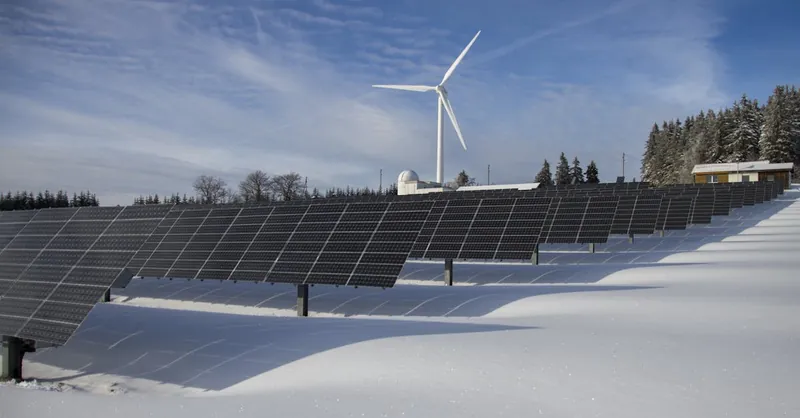
Image courtesy of Pixabay
Off-Grid System Sizing and Load Analysis: Calculating Needs and Designing Scalable Systems
A precise system sizing and load analysis is fundamental to designing efficient, scalable off-grid renewable energy installations tailored to specific user requirements. Whether powering a remote cabin or an autonomous microgrid, accurately calculating energy demand and matching it to generation and storage capacity ensures reliability, cost-effectiveness, and ease of future expansion.
Step 1: Conduct a Detailed Load Analysis
Begin by quantifying all electrical loads in the off-grid system to understand consumption patterns and peak demands. This includes:
- Listing all appliances and devices, along with their rated power (watts).
- Recording daily usage hours for each load to calculate daily energy consumption (watt-hours or kilowatt-hours).
- Assessing peak power requirements to size inverters and generators capable of handling surge currents from motors or startup loads.
- Categorizing loads by criticality—critical, essential, or non-essential—to prioritize during supply constraints.
A comprehensive load profile, ideally broken down hour-by-hour, provides the foundation for system dimensioning and informs battery capacity and renewable generation sizing. Tools such as spreadsheets, load calculators, or energy monitoring devices assist both beginners and engineers in this process.
Step 2: Calculate Energy Generation Capacity
Using the load analysis, estimate the renewable energy generation required to meet daily consumption plus system losses (usually 10-20%). Consider:
- Solar PV sizing: Calculate based on average daily solar irradiance and panel efficiency.
- Wind turbine capacity: Factor in local wind speed distributions and turbine performance curves.
- Incorporate resource variability, seasonal fluctuations, and location-specific derating factors.
Aim to design the system with some buffer capacity to accommodate periods of low renewable availability and future load growth. Hybrid combinations of solar, wind, or micro-hydro can smooth supply variability and improve overall capacity factors.
Step 3: Determine Energy Storage Requirements
Energy storage sizing depends on desired autonomy period—the number of days the system must supply power without any renewable input (e.g., during cloudy or windless days). Calculate battery capacity by:
- Multiplying average daily load by the autonomy days.
- Adjusting for depth of discharge (DoD) and battery efficiency to avoid premature degradation.
- Including safety margins to accommodate unforeseen load surges or resource shortfalls.
Larger, well-sized storage increases system reliability but adds to upfront cost and complexity, so striking a balance is key.
Step 4: Design for Scalability and Flexibility
A modular approach to system design promotes scalability, allowing the installation to grow as energy needs evolve. Consider:
- Using standardized components such as battery banks and inverter sizes that can be expanded incrementally.
- Designing wiring and mounting structures with future capacity upgrades in mind.
- Incorporating smart controllers and monitoring systems that adapt easily to added generation or loads.
This approach ensures the off-grid renewable energy system remains adaptable, cost-efficient, and future-proof—whether serving a single home or a community-scale microgrid.
By following this step-by-step approach to load analysis and system sizing, installers and engineers can create tailored off-grid renewable energy solutions that deliver reliable, sustainable power optimized for current demands and scalable for tomorrow’s growth. This methodical design process prevents over-investment and underperformance, making energy independence achievable and efficient in every off-grid application.
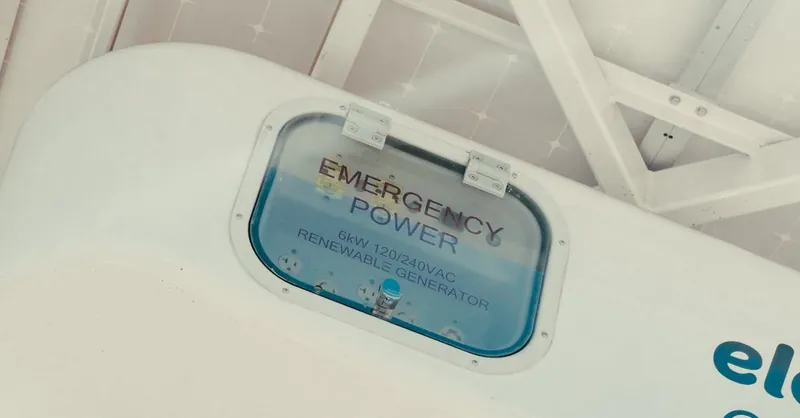
Image courtesy of Kindel Media
Innovations and Trends in Off-Grid Renewable Technologies: Hybrid Systems, AI, and Microgrids
As off-grid renewable energy solutions evolve, innovations and emerging trends are dramatically expanding system capabilities, efficiency, and adaptability. Modern off-grid systems are no longer standalone setups relying solely on single generation sources and basic storage; instead, they increasingly incorporate hybrid energy configurations, artificial intelligence (AI)-driven control, and microgrid architectures that collectively revolutionize energy independence and resilience.
Hybrid Systems: Maximizing Resource Complementarity and Reliability
A key advancement shaping off-grid renewable energy is the rise of hybrid systems that intelligently combine multiple energy sources—typically solar photovoltaics, wind turbines, and sometimes micro-hydro or diesel generators—to take advantage of complementary generation patterns. These hybrid setups offer:
- Enhanced energy reliability by smoothing intermittency and resource variability.
- Optimized system sizing and costs through shared storage and power electronics infrastructure.
- Reduced environmental impact by minimizing fossil fuel reliance and tailoring renewable contributions to site-specific resources.
State-of-the-art hybrid systems utilize advanced power management units (PMUs) and configurable inverters to seamlessly orchestrate power flow, maximizing renewable yield while preserving battery health. This integrated approach increases autonomy, reduces generation curtailment, and improves overall system lifespan.
AI and Machine Learning: Enabling Predictive and Adaptive Energy Management
Artificial intelligence has emerged as a transformative technology for off-grid renewable energy, enabling real-time optimization and predictive control that surpass conventional rule-based management. AI algorithms analyze historical and live data—including weather forecasts, load patterns, and battery state-of-charge—to dynamically adjust system operation with benefits such as:
- Predictive load shifting and demand response that align consumption with periods of high renewable availability.
- Fault detection and diagnostics to proactively flag potential system issues before failures occur.
- Enhanced energy forecasting accuracy supporting better sizing and operational adjustments.
- Intelligent dispatch of hybrid resources to minimize costs and maximize efficiency.
By integrating AI into energy management systems (EMS), off-grid installations become adaptive, self-learning platforms that optimize performance autonomously, thus reducing human intervention and operational expenses.
Microgrids: Modular, Scalable, and Community-Centric Energy Solutions
Off-grid microgrids represent a major innovation trend, especially for rural electrification and remote community applications. These localized grids interconnect multiple renewable generators, storage units, and loads, managed via sophisticated control systems. Advantages of microgrids include:
- Scalability: Module-based expansion supports growing energy demands without extensive redesign.
- Resilience: Ability to disconnect (“island”) from centralized grids or backup power sources during outages offers unmatched reliability.
- Energy sharing: Multiple users or facilities can share resources and reduce individual costs through collective management.
- Integration with smart meters and IoT sensors facilitates granular monitoring, billing, and demand-side management.
Cutting-edge microgrid controllers incorporate peer-to-peer energy trading frameworks and blockchain technologies, pushing the frontier toward decentralized, democratized energy networks that align with sustainability and social empowerment goals.
These emerging innovations—hybrid energy systems, AI-driven controls, and sophisticated microgrid architectures—are collectively reshaping the future landscape of off-grid renewable energy. By leveraging these trends, designers, engineers, and end-users can achieve unparalleled levels of energy autonomy, cost efficiency, and environmental sustainability, unlocking new frontiers for off-grid power across diverse applications worldwide.
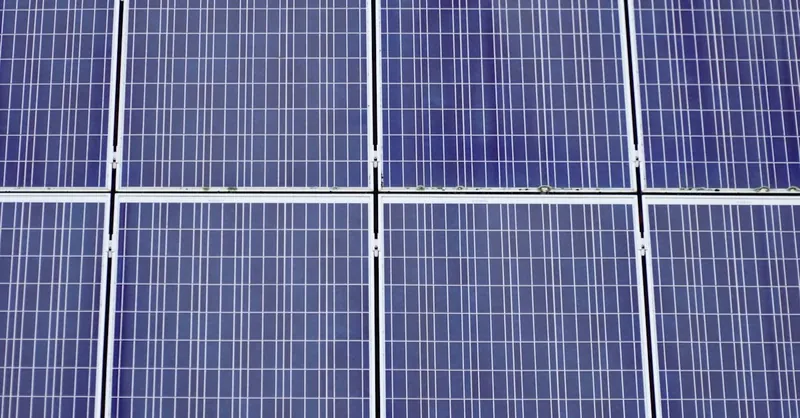
Image courtesy of Jan Van Bizar
Challenges and Solutions in Off-Grid Deployments: Technical, Economic, and Maintenance Aspects
Implementing off-grid renewable energy systems presents a unique set of challenges that must be addressed to achieve reliable, cost-effective, and sustainable power solutions. These challenges span technical complexities, economic constraints, and ongoing maintenance demands. Anticipating and overcoming these obstacles is essential for both beginners and electrical engineers aiming to deploy resilient off-grid systems in remote or resource-constrained environments.
Technical Challenges and Practical Solutions
- Resource Variability and Intermittency:
Solar and wind resources are inherently variable, causing fluctuations in energy generation. To mitigate this: - Design hybrid systems combining complementary renewable sources to balance supply.
- Implement advanced energy storage solutions sized for sufficient autonomy.
-
Use smart control systems with predictive algorithms for real-time load and generation optimization.
-
System Complexity and Integration:
Off-grid setups often involve multiple components like inverters, charge controllers, and storage units, which must work harmoniously. Key solutions include: - Employing modular architectures for easier integration and scalability.
- Utilizing comprehensive energy management systems (EMS) to automate coordination and fault diagnostics.
-
Applying rigorous system monitoring to quickly detect and resolve issues.
-
Power Quality and Reliability:
Maintaining stable voltage and frequency in isolated systems is critical, especially for sensitive electronics. Address this by: - Choosing grid-forming inverters with high-quality waveform output.
- Incorporating power conditioning devices to filter harmonics and transient spikes.
- Prioritizing load management to avoid overloads and prevent battery over-discharge.
Economic Considerations and Cost Optimization
- High Upfront Capital Costs:
Initial investments in renewable generators, batteries, and control systems can be considerable. To reduce financial barriers: - Optimize system sizing based on precise load and resource assessments to avoid overspending.
- Leverage local incentives, subsidies, or financing mechanisms targeted toward renewable energy adoption.
-
Opt for hybrid designs that maximize renewable use while minimizing costly fuel-based backups.
-
Cost of Maintenance and Spare Parts:
Remote off-grid locations often incur higher logistics expenses for repairs and replacements. Practical approaches include: - Selecting reliable, durable components with proven track records and extended warranties.
- Training local operators in basic system maintenance and troubleshooting.
- Designing systems with redundancy and modularity to isolate faults and swap out parts quickly.
Maintenance Challenges and Best Practices
Effective maintenance is critical to sustaining off-grid renewable energy system performance over time. Common maintenance challenges include battery degradation, inverter faults, and physical wear on mechanical components such as wind turbines. Recommended maintenance strategies encompass:
- Preventive Maintenance: Regular inspection and cleaning of solar panels, mechanical lubrication, and battery health checks reduce unexpected downtime.
- Remote Monitoring: Incorporating IoT-enabled sensors and communication tools enables early detection of anomalies and remote troubleshooting.
- Documentation and Training: Comprehensive manuals and operator training programs empower users to handle routine tasks and escalate complex issues appropriately.
By proactively addressing these technical, economic, and maintenance challenges, off-grid renewable energy deployments can achieve long-term success, delivering uninterrupted, sustainable power even in the most demanding off-grid environments. This holistic approach combines strategic design, smart management, and practical operations to unlock the full potential of renewable energy independence.
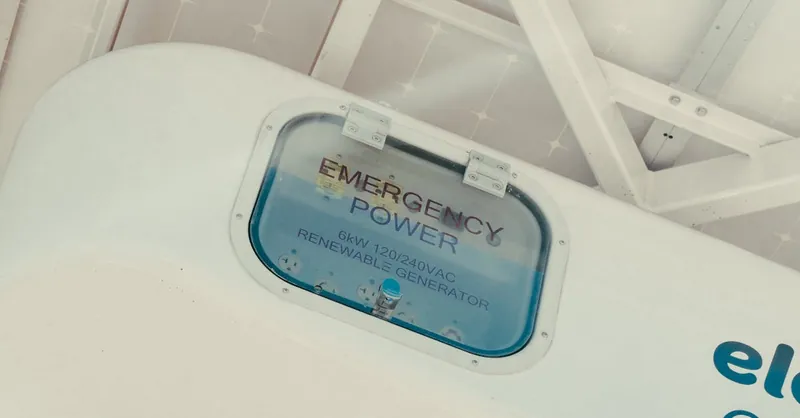
Image courtesy of Kindel Media
Case Studies and Practical Examples: Successful Off-Grid Renewable Projects and Lessons Learned
Exploring real-world case studies of off-grid renewable energy projects provides invaluable insights into how theoretical designs translate into practical, sustainable solutions. These examples highlight best practices, common pitfalls, and innovative approaches that both beginners and electrical engineers can leverage to enhance their own off-grid system implementations.
Case Study 1: Remote Mountain Cabin Using Solar-Wind Hybrid System
A remote mountain cabin in northern Europe exemplifies a successful hybrid off-grid system combining solar photovoltaic panels and a small horizontal-axis wind turbine. Key features of this project include:
- Accurate site assessment: Detailed wind resource measurements and solar irradiance data guided optimal sizing.
- Hybrid integration with battery storage: Lithium-ion batteries were selected for their high cycle life and better performance in cold climates.
- Smart load management: Prioritization of critical loads like heating and communication devices ensured uninterrupted functionality during low generation periods.
Lessons learned: Proper sizing and integration balanced cost-effectiveness with reliability, and hybridization significantly reduced dependency on expensive diesel backups historically used in this isolated location.
Case Study 2: Rural Electrification Microgrid in Sub-Saharan Africa
A community-scale off-grid microgrid powered primarily by solar arrays and supported by lead-acid battery banks has electrified multiple households, health clinics, and schools. Highlights include:
- Modular, scalable design: The system allowed incremental expansion in line with community growth and energy demand increases.
- Local capacity building: Training local technicians in system operation and maintenance greatly improved uptime and reduced operational costs.
- Use of remote monitoring: IoT-enabled energy management facilitated predictive maintenance and performance optimization despite challenging logistics.
Lessons learned: Community engagement and adaptability are critical to long-term success, while balancing upfront costs with durable component selection supports sustainability in resource-constrained settings.
Case Study 3: Off-Grid Research Station Leveraging Emerging Storage Technologies
An Arctic research station installed a cutting-edge renewable system that integrates solar panels, wind turbines, and hydrogen fuel cell storage to overcome prolonged periods of darkness and extreme weather. Notable innovations include:
- Hydrogen storage for seasonal energy: Electrolysis converts excess renewable power to hydrogen, which is later converted back to electricity during long, sunless winters.
- AI-driven control systems: Machine learning algorithms optimize power dispatch to enhance fuel cell efficiency and prolong battery life.
- Robust system design: Components are designed for extreme temperature tolerance and minimal maintenance accessibility.
Lessons learned: Advanced storage technologies paired with intelligent controls enable reliable power in harsh environments where conventional batteries and generation fall short.
These practical examples demonstrate how combining site-specific assessments, hybrid generation technologies, advanced storage solutions, and smart control systems result in resilient off-grid renewable energy projects. They reinforce that thoughtful system design, local context awareness, and ongoing management are essential to delivering reliable, sustainable energy beyond the grid. Integrating these lessons will empower engineers and enthusiasts alike to optimize off-grid renewable systems tailored to diverse real-world applications.
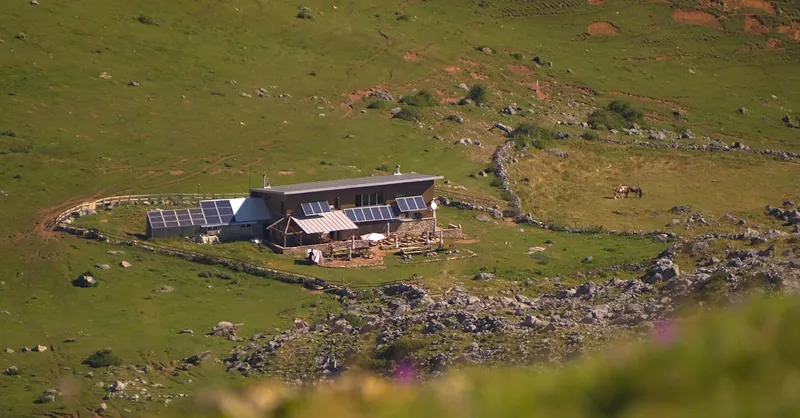
Image courtesy of M K
